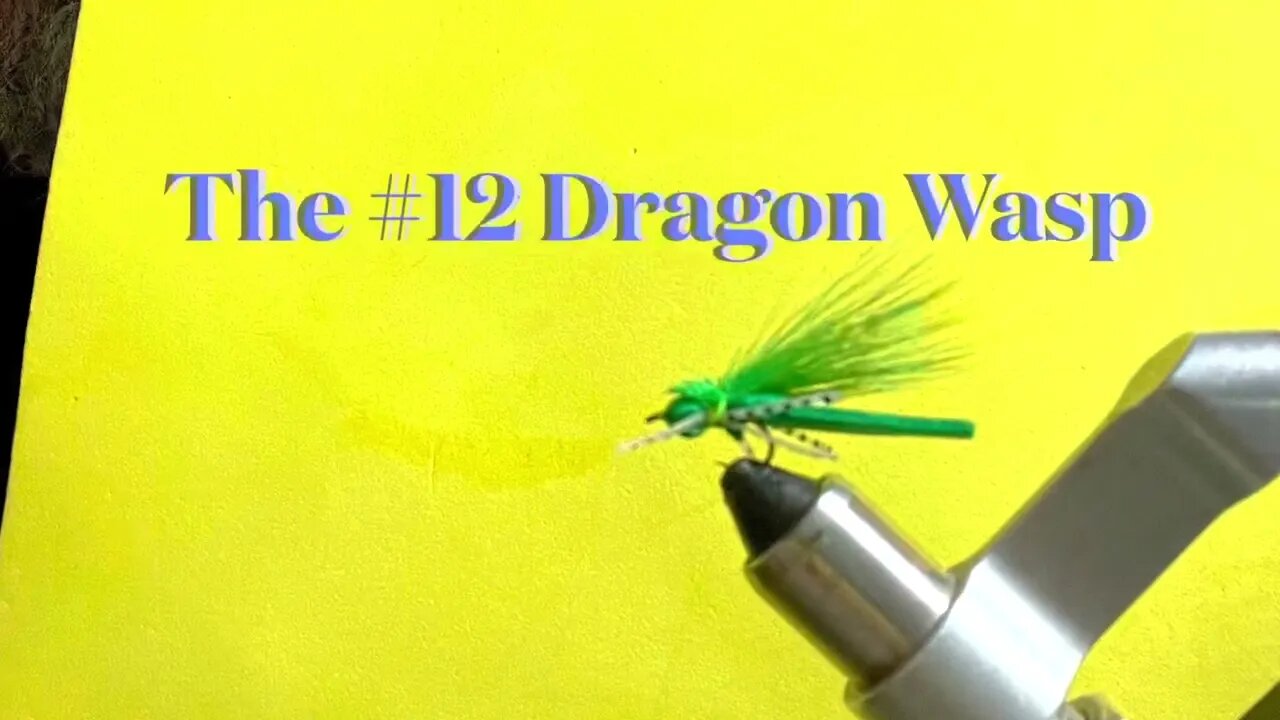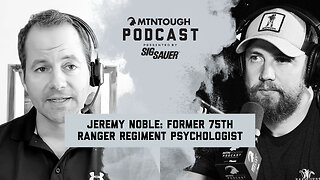Premium Only Content

Fly Tying the #12 Dragon Wasp
During the summer, land-born insects appear in greater number and become a larger part of a trout’s diet. The list of terrestrials living near water is quite long: grasshoppers, moths, butterflies, beetles, crickets, flies, ants, wasps, and more. Trout, especially those inhabiting small rivers, don’t miss the chance for easy meals; terrestrials usually get blown onto the water or fall from nearby vegetation, and the fish quickly gulp them down.
We still have a few months before casting terrestrial imitations becomes a major part of our fishing, but we like filling our fly boxes in advance. Tying this wasp pattern is challenging, but it is worth the effort. Add a few to your fishing kit, and you’ll be ready when the real wasps begin appearing alongside your favorite trout stream.
Basic Wasp Biology
Most wasps have yellow-and-black barred bodies with dangerous stingers that cause pain; for some people, wasp stings can cause dangerous allergic reactions. Wasps, just like bees, are amazing architects that build nests where they grow and care for their young larvae. Ants, bees, and wasps belong to the order Hymenoptera, which is derived from the Greek words hymen (membrane) and pteron (wing).
Hymenoptera means “membranous wings.” Wasps belong to the family Vespidae, which has 5,000 registered species. Wasps are divided into two groups: those that live solitary lives, and those that live in colonies.
Wasps become active during the first warm days near the beginning of April, but their numbers increase during the summer. They are most active on warm, sunny days. During those times, wasps require a close source of water, and they will visit the wet sand of a riverbank or the shore of a nearby lake. That is when they might fall or get blown onto the surface of the water and become prey for fish.
The bodies of worker wasps, which are the most numerous members of a colony, are 12 to 16 millimeters long. Only worker wasps have stingers. At the beginning, a colony is rather small and will have only 20 to 30 wasps. Some colonies, however, can grow to have 3,000 members!
Worker wasps, which we see flying across fields gathering food for their colonies, feed on other insects such as mosquitoes and caterpillars. During the summer, they ingest sweet juices from fermented fruits and become aggressive. Their regular appearance near water makes them available to the fish and an interesting natural for fly tiers to imitate.
How to Tie Your Wasp
You can tie wasp imitations using a variety of different materials. We usually use closed-cell foam for the bodies of our flies, but you can also build up the bodies of small imitations—size 14 or smaller—using tying thread. Wrap layers of thread to build the body, and then coat the body with cement. The completed, durable body will look realistic, but it will not float so well as a foam body. A spundeer-hair body also floats well, but making one is very time consuming and far more difficult.
After years of professional tying, we always think of how we can improve our patterns to shorten the tying time yet still create realistic and durable flies with the appropriate characteristics. Using closed-cell foam for the body of our big wasp is fast and easy, and the completed fly floats well. Remember, though, that a terrestrial imitation does not have to float perfectly because the real insect will eventually float in the surface film and the fish will still strike it eagerly.
For the legs of your fly, use yellow rubber legs barred with a black permanent marker; these legs are very flexible and look great on the water. A grizzly cock hackle dyed yellow is also a good choice for making the legs on a wasp imitation.
You can make the wings of your wasp using some sort of plastic film material. Although these wings will look very realistic, they might cause the fly to spin when casting and thus tangle your leader. We prefer using ginger cock hackle tips for the wings.
When fishing your wasp, let it float passively—dead drift—on the surface of the water. Cast the fly under the bushes hanging over the water. When real wasps and other terrestrials are flying near the stream, your fly will receive an energetic response from the trout.
#bassonthefly #flyfishing #flytying #bassfishing #flytyingjunkie #streamerjunkie #catchandrelease #bass #largemouthbass #flyfishingaddict #pikeonthefly #flytyingaddict #fishing #streamerfishing #flyfishingnation #onthefly #smallmouthbass #bassflyfishing #flyfishingjunkie #smalliesonthefly #orvis #flytyingnation #smallmouthonthefly #trout #flyfishinglife #troutonthefly #bassfly #flies #freshwater #fishonthefly
-
 LIVE
LIVE
RalliedLIVE
1 hour ago $1.21 earnedSHOTTY BOYS WARZONE CHALLENGES
531 watching -
 57:20
57:20
HotZone
6 hours ago $0.02 earnedWar Continues as Israel Strikes HARD in Lebanon and Iran
252 -
 1:38:15
1:38:15
Russell Brand
3 hours agoGlastonbury Goes RADICAL - Police Probe 'Death to the IDF' Chant - SF605
168K15 -
 1:32:42
1:32:42
Tucker Carlson
2 hours agoRFK Jr. Provides an Update on His Mission to End Skyrocketing Autism and Declassifying Kennedy Files
45.1K36 -
 DVR
DVR
Sean Unpaved
2 hours agoCode, Kill, Cash & Trades: Beasley Bets & NFL Trades
14K1 -
 1:06:29
1:06:29
MTNTOUGH Podcast w/ Dustin Diefenderfer
4 hours agoJeremy Noble: What Army Rangers Do Every Day to Build Unbreakable Mental Toughness | MTNPOD #122
4.96K -
 LIVE
LIVE
SternAmerican
1 day agoElection Integrity Call – Monday, June 30 at 2 PM EST | Hosted by Steve Stern & Raj Doraisamy
146 watching -
 1:04:25
1:04:25
Timcast
3 hours agoDemocrat Zohran Mamdani Calls For TAXING WHITE PEOPLE, Media Says HES NOT Communist
207K71 -
 LIVE
LIVE
Viss
2 hours ago🔴LIVE - Dominating The Battleground with Tactics! - PUBG
86 watching -
 1:04:27
1:04:27
Rebel News
2 hours agoPoilievre byelection called, Carney folds to Trump, Dr. Tam wins Order of Canada | Rebel Roundup
17K20